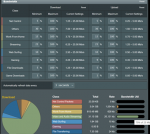dave14305
Part of the Furniture
FlexQoS will trigger immediately after the signature update (restart_wrs event), unlike FreshJR_QOS which relied on the 3:30 AM scheduled check.it does after a signature update which i believe happen at 2am. it reruns the script because aft a sig update its disabled


